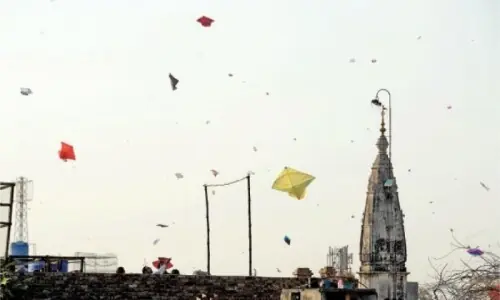 BANTUL (Indonesia), May 27: A powerful earthquake flattened homes and buildings in central Indonesia on Saturday as people slept, killing more than 3,500 and injuring thousands more in the nation’s worst disaster since the 2004 tsunami.
BANTUL (Indonesia), May 27: A powerful earthquake flattened homes and buildings in central Indonesia on Saturday as people slept, killing more than 3,500 and injuring thousands more in the nation’s worst disaster since the 2004 tsunami.
Two-thirds of the fatalities occurred in devastated Bantul. “The numbers just keep rising,” said Arifin Muhadi of the Indonesian Red Crescent, adding that more than 3,400 people were hurt.
Officials estimated some 200,000 people had been displaced. The magnitude-6.2 quake struck at 5.54am (3.54am PST) near the ancient city of Yogyakarta, 400kms east of the capital, Jakarta. It was centred about 10kms below the surface, the US Geological Survey said.
Activity picked up at nearby Mount Merapi, one of the world’s most active volcanoes, and one geologist warned the temblor could still spark a large eruption, though another downplayed those concerns.
Indonesia sits on the Pacific ‘Ring of Fire’, where the meeting of continental plates causes high volcanic and seismic activity.
On Dec 26, 2004, a 9.1 quake triggered a tsunami that crashed into 11 countries across the Indian Ocean, killing more than 230,000 people, most of them in the Indonesian province of Aceh.
The quake in the heart of densely populated Java Island knocked down scores of houses, a hospital and government buildings, sending hysterical people running into the streets. Many roads and bridges were destroyed, hindering efforts to get taxis and pickup trucks filled with wounded to packed hospitals.
One of the worst hit areas was the Bantul district, south of Yogyakarta, which was flattened.
“There is only one house remaining standing,” said Ngadiyo, 63, crouching in front of his ruined house. “But even that is not safe any more.”
At Solo airport, near Bantul, school teacher Muhammad Yusan said he had left Aceh, 1,600kms away, in the morning to try to reach his family in Bantul.
“I lost my father, aunt and niece, but I can’t confirm the rest because I can’t get hold of them,” Yusan said. “I think Bantul is flattened because most houses there are poorly built and old.”
First news of the quake set off frightening memories of the Indian Ocean tsunami two years ago, as thousands of panicked residents fled to higher ground, fearing a repetition of the deadly giant waves.
Many could not escape the quake and were buried under collapsed buildings or struck by flying rocks and debris as the temblor devastated towns and villages near Yogyakarta.
In Bantul, rescuers tried to pull bodies from the rubble as residents started digging mass graves, rows of corpses awaiting burial beneath the blazing sun.
Subarjo, a 70-year-old food vendor, sobbed next to his dead wife.
“I couldn’t help her,” he said. “I was trying to rescue my children ... and then the house collapsed.”
“I have never gone through an earthquake this strong during my entire life,” said Jodi Riwono, 46, who was trapped unconscious in the wreckage of his home before a grandson pulled him to safety.
“I do not know what we did,” said Riwono, his legs covered in purple bruises. “But we must have sinned for God to be angry like this.”
“It’s pitch dark. We have to use candles and we are sitting outside now. We are too scared to sleep inside. The radio keeps saying there will be more quakes. We still feel the tremors,” said Tjut Nariman. President Susilo Bambang Yudhoyono ordered the army to help evacuate victims and arrived in the province with a team of ministers to oversee rescue operations. He also told people not to fear a tsunami.
As night fell across the affected area, thousands of people were preparing to sleep outside their homes, fearful of aftershocks. Power was out across much of the region, adding to their terror.
In the chaos that followed the quake, civilians carried bloodied survivors, including children, into hospitals, sometimes jumping off flatbed trucks used in construction. Large cracks crisscrossed some roads, while others had collapsed.
Doctors struggled to care for the injured, hundreds of whom were lying on plastic sheets, straw mats and even newspapers outside the overcrowded hospitals.—Agencies

































